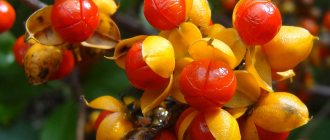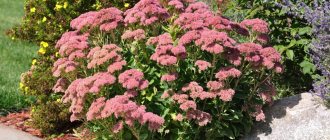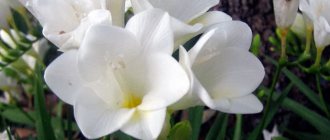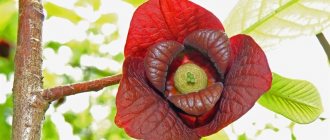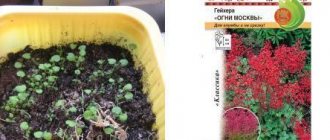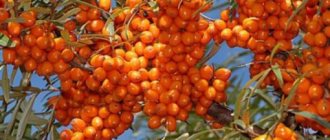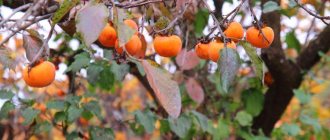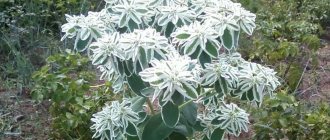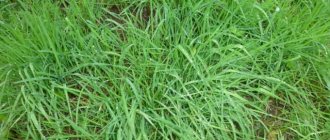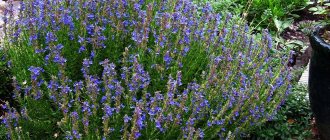Today, cottages and garden plots attract attention with their individuality, not only in design, but also in the breeding of exotics. Particularly valuable are less common crops that are distinguished by their easy care, beauty of the bush and nutritional or medicinal properties. One such plant is Gynostemma pentafolia. In China it is called jungalan - "herb of immortality", in the trade network the seeds, tea and other products are known as jiaogalan. Gynostemma is also called cheap southern ginseng in China (due to its cost compared to real ginseng). In Russia, the plant is better known as jiaogulan or jiaogulan.
Gynostemma pentaphyllum
What is gynostemma famous for?
Gynostemma pentaphyllum belongs to the pumpkin family (Cucurbitaceae). The mountainous regions of southern China are considered the homeland of Gynostemma. The main distribution area is Asian countries. It grows everywhere in Vietnam, South Korea, Bangladesh, India, Indonesia in the form of herbaceous or semi-lignified thickets in sunny meadows, in partial shade, in low-lying damp places, on roadsides and slopes, rising to a height of up to 3000 meters.
In the first years of its appearance in Europe, gynostemma was grown as an exotic indoor plant, and later in the southern regions it appeared in open ground. Gynostemma began to spread especially widely among lovers of exotic plants after the 1991 Beijing Conference on the use of medicinal plants in folk medicine. Among such plants, gynostemma was singled out in the top ten as a medicinal plant that affects 5 systems of the human body - reproductive, nervous, cardiovascular, digestive and immune.
A wonderful plant that has a pronounced anti-aging effect when used regularly in the form of freshly brewed tea. Gynostemma teas extended the life of the aborigines for 100 years, and an active life at that. Residents of the provinces at the age of 100 managed their own households and even worked as hired workers.
Making tea
Raw leaves can be drunk separately by brewing with boiling water. Some add it to herbal preparations. You can prepare a healing drink from dried raw materials. To brew tea, you will need 1.5-2 tsp per glass of hot water (95-98 0C). crushed dried leaves. It is recommended to fill the grass with water and wait 3-5 minutes.
To prepare tea from fresh raw materials, you will need about 3 tsp per 1 glass. crushed gynostemma.
When drug medicine turns out to be powerless, people resort to unconventional medicine: they are treated with herbal remedies. One of the plants that can help fight diabetes, obesity, nervous system disorders and atherosclerosis is gynostemma or jiaogulan. An unpretentious perennial plant native to China, decorates garden plots. Tea made from it prolongs life, and elixirs and extracts have anti-aging and anti-inflammatory effects.
X
Brief description of gynostemma
Gynostemma belongs to the group of liana-like plants. In their homeland, these are perennial vines with woody shoots. In regions with winter frosts down to -18 °C, gynostemma grows as a perennial summer-green crop with annually renewed herbaceous shoots equipped with tendrils. The roots of the plant are creeping. They are well preserved under cover in the soil of the southern regions. The stems are thin, climbing, equipped with tendrils. Glabrous, less often pubescent, grooved-angular.
The above-ground mass can be ground cover, clinging with tendrils, forming vertical green walls of gazebos, recreation areas in apartments, winter gardens, and greenhouses. In indoor culture, delicate green lace hangs from pots and containers located on window sills and tall fixtures. During the growing season, gynostemma produces vines up to 8 m, which can be constantly cut for freshly brewed tea, and in the winter, enough of them can be dried for invigorating medicinal drinks. The petiolate leaves are palmately compound, consisting of 5-7-9 individual lanceolate leaflets with finely toothed edges (reminiscent of a maiden grape leaf).
In summer, the leaf blade is shiny, bright green, and by autumn it turns red. Gynostemma is a dioecious plant. The flowers are unisexual, small white or greenish, the corolla is tubular in shape with five deeply dissected lobes. The flowers are collected in axillary racemose panicles up to 15 cm long. Male inflorescences are longer than female ones. The male flower has long, well-developed stamens with a reduced pistil. They bloom in July-August. The fruits are black spherical berries with 2-3 seeds with a tiny spine-like outgrowth.
Gynostemma pentaphyllum. © Maja Dumat
Beneficial features
Gynostemma pentafolia is currently not a pharmacopoeial plant and is not used in official medicine. However, the healing properties of the “herb of immortality” are amazing. It helps with many diseases, improves the functioning of the body, increases vitality, eliminates nervous stress, and stops the aging process. According to studies, the spectrum of biological activity of jiaogulan-based products is comparable to ginseng, but for some diseases they are more effective. That is why the plant is often called “southern ginseng”: “southern” because it grows in south-central China, and “ginseng” because it resembles ginseng in its medicinal effects.
The greatest therapeutic effect of Gynostemma pentaphyllum is manifested with long-term use of small doses than with short-term high doses. It has a beneficial effect on the functions of the digestive, cardiovascular, nervous, immune and reproductive systems, helps strengthen the body during the recovery period after serious illnesses, and is effective for the prevention and treatment of cancer.
Remedies based on the herb jiaogulan have the following healing effects on the human body:
- tone, increase physical and nervous endurance;
- reduce nervousness, prevent stress and make it easier to survive;
- promote the elimination of toxic substances;
- improve metabolic processes and oxygen supply to cells;
- normalize body weight;
- have a hypoglycemic effect;
- improve memory and cerebral circulation;
- strengthen the immune system;
- helps normalize blood pressure levels;
- have antioxidant activity;
- normalize blood cholesterol levels;
- stop the growth of cancerous tumors;
- prevent the formation of blood clots.
Southern ginseng or Gynostemma pentaphyllum can be used in the complex treatment of problems such as diabetes, hypertension, arrhythmia, atherosclerosis, hepatitis, nervous exhaustion, and chronic fatigue syndrome. It is effective in preventing heart attack and stroke. Jiaogulan helps with bronchitis, some diseases of the genitourinary and digestive systems. Gynostemma products will be very useful for professional athletes and people exposed to heavy physical activity every day.
Interesting: Wild-growing jiaogulan has long been brewed as tea by local Chinese residents living in the areas where it grows. Scientists noted that among these people there are many whose age exceeds 100 years and at the same time they are able to independently do housework and even earn extra money.
Fresh leaves and fruits of jiaogulan are edible. Leaves can be added to vegetable salads, soups, and side dishes. They have a sweet taste, so they are also used as a sweetener or seasoning in the preparation of some dishes and desserts.
The beneficial properties of Gynostemma quinquefolia have found application not only in folk medicine, but also in cosmetology. It has an astringent effect, relieves inflammation, softens and moisturizes the skin, stimulates cell regeneration processes, and slows down the aging process. Adding it to face masks will delay the appearance of age-related changes, relieve swelling, tighten and smooth the skin.
Growing gynostemma in open ground
Preparing Gynostemma seedlings
In warm regions of Russia, Gynostemma is grown in open ground through seedlings. Seeds for cultivation can be purchased at special retail outlets and seed stores. Before planting, gynostemma seeds are soaked in heated water for 20-24 hours and sown in prepared pots filled with humus or compost with sand 2-3 cm deep. You can fill the containers with a special mixture purchased in the store. The air temperature is maintained within +20..+22 °C. Before germination, it is advisable to cover the containers with film. With the emergence of shoots, the film is removed.
Caring for gynostemma before planting in open ground consists of keeping the soil moist and with sufficient lighting without direct sunlight. Diffused light is better for seedlings. No fertilizing is carried out. The Gynostemma seedling needs enough nutrients from the substrate, which consists of 50-70% organic matter. When the open ground warms up to +14..+15 °C, the seedlings are planted in open ground.
Choosing a place for planting gynostemma and preparing the soil
Gynostemma seedlings are planted in a lighted or semi-shaded place. The liana must have support, so it is better to place the gynostemma near walls, various fences, gazebos, or install special supports. The liana grows in open ground during the warm period, forming lashes up to 8-10 or more meters in length.
Gynostemma prefers light soils. If the plant is planted on heavy soils, then prepare a fairly large planting hole, in which good drainage is formed and filled with a soil mixture consisting of organic matter and soil in a ratio of 50:50 or 60-70:40-30 parts. A depression is made in the middle of the filled hole and a Gynostemma seedling is planted using the transfer method.
Gynostemma pentaphyllum. © Maja Dumat
How to grow Gynostemma quinquefolia
In nature, this species can be found in southeast Asia, the Himalayas, the Japanese Islands, Malaysia and New Guinea. After they publicly spoke about its beneficial properties and use in alternative medicine at the Beijing conference in 1991, gardeners and botanists began to grow this plant much more actively (Figure 1).
Note: Gynostemma has other names related to its properties. For example, Thai tea, southern ginseng, the herb of immortality and even “jiaogulan”.
At first, Europeans grew gynostemma only at home; it was a rare exotic, but not so long ago in the southern territories they began to plant it in gardens. Its natural habitat suggests that this loach loves warmth. Gynostemma loves sun and water. You need to choose well-lit areas or at least partial shade.
Figure 1. You can grow gynostemma at home from seeds or cuttings
Since the stems of this plant are liana-shaped, you need to make sure that there is a fence, gazebo or house facade nearby. In general, we need a device along which our gynostemma will curl. Its stems can reach up to 8-10 meters. In nature, of course, no one ties up this loach, and as it grows, it forms entire thickets, but in the garden, a tied up gynostemma will get more sun and take up less space.
Gynostemma Care
Gynostemma does not require special care. There should be no weeds. The soil should be constantly moist, but without stagnant water in the area where the root system is located. Water every 7-12 days, maintaining uniform soil moisture in the root layer. In the first years, the gynostemma is not fed. Over time, in the spring, add a 5-10 cm layer of mulch from mature humus or compost. After a year, you can apply Kemira (it contains microelements), 30-40 g per bush, or another mineral complex fertilizer containing microelements.
In dry weather, the above-ground mass is sprayed with clean, settled water in the morning. Since the leaf mass of the plant is used throughout the warm period for freshly brewed teas, salads and other dishes, the gynostemma is not treated with anything. During the summer period, the green mass is pruned and dried for winter use. In autumn, Gynostemma changes the color of its leaves to red, which fall off when cold weather sets in.
Features of winter care for gynostemma
Gynostemma pentafolia can withstand frosts down to -15..-18 °C under a high layer of snow. During snowless winters, the above-ground part freezes out and grows back in the spring. To avoid freezing of the root system during weather disasters, in the fall the above-ground part of the gynostemma is cut off, leaving stumps of 3-5 cm, and covered with leaves, spruce branches, peat and other covering materials. In the spring, when the weather is warm, they open.
Some gardeners in regions with long-term low temperatures grow gynostemma in containers, which are moved indoors in the fall and stored until spring in a cool, dark place, and in the spring in May they are taken out into the garden and transplanted into open ground or a larger container. For the winter, by cutting off excess greenery, you can place the gynostemma in a pot on a windowsill or in a winter recreation corner and use medicinal greenery in the winter cold.
Reproduction of Gynostemma
Gynostemma is propagated by seed or vegetative methods. The plant is dioecious and male and female plants are required to produce seeds. Seeds for propagation are sown immediately after ripe fruits are removed.
Reproduction of gynostemma by leaf with part of the petiole is more accessible. They cut the liana. Choose a young, well-developed shoot. An oblique cut is made above the leaf from left to right and the next one is made under the leaf, retreating 1.0-1.5 cm. A leaf with a part of the shoot is planted in a recess of up to 1.0 cm, deepening it to the leaf. A container with prepared compost or humus soil is moistened with a root solution. Slightly squeeze the soil around the shoot. Mulching. Before rooting the gynostemma, it is necessary to monitor the air temperature and soil humidity. Vegetative propagation does not cause any particular difficulties.
Gynostemma pentaphyllum. © Maja Dumat
Chemical composition and medicinal properties of gynostemma
Gynostemma has been used since ancient times as a food and later as a medicinal product. Gynostemma has been known as a medicinal drug since 200 AD. BC. The leaves and young shoots of the plant have a sweetish taste. Fresh leaves and young shoots are used to prepare tea, salads, and add to first and second courses. Infusions, alcoholic extracts, tablets, and powders are prepared from the leaves.
Gynostemma is rich in microelements - calcium, iron, potassium, phosphorus, zinc, magnesium, selenium and others. The leaves contain a rich set of vitamins, amino acids, and proteins. In the above-ground mass of plants there are more than 80 saponins identical to ginseng (there are 28 of them in ginseng). Gynostemma, when used, increases the body's endurance several times, which makes this plant indispensable for athletes and specialists working with high physical activity.
The plant is a good sugar substitute, which justifies its use by diabetics. In traditional Chinese medicine, Gynostemma quinquefolia is considered a plant whose leaf drinks slow down the aging of the human body. Plants increase immunity, reduce cholesterol, treat genitourinary diseases, gastrointestinal tract, improve memory and other systems. Gynostemma is called the “herb of immortality” for its high healing ability of the whole body and anti-aging effect. Unlike ginseng, Gynostemma quinquefolia does not cause overstimulation. On the contrary, when taken regularly, teas calm the nervous system.
All these properties are fully manifested when using gynostemma grown under natural conditions, that is, in the open ground of a familiar environment. When grown indoors or planted in summer from containers into open ground, the effectiveness of the medicinal properties is somewhat reduced. It should be taken into account that the natural conditions of the regions of Russia differ from those required for the natural development of the gynostemma. However, the beneficial properties of the drink made from gynostemma leaves are high enough to maintain health.
You can combine business with pleasure: the highly decorative landscaping effect of climbing vines and the healing effect on 5 systems of the human body, especially the immune and nervous.
Gynostemma pentaphyllum
What impact does
“The Herb of Immortality” is widely used by Chinese doctors, but, without scientific confirmation in Russia, it is classified as a folk remedy.
In China, fresh or dried gynostemma is used to make brewed tea. The leaves and fruits of Gynostemma are collected to make tinctures, tablets and powders. In taste and its tonic properties, gynostemma resembles ginseng or fireweed.
It is sweet, so it can replace traditional sugar and be used by people with diabetes.
Diabetes
Gynostemma, whose healing properties have been known in China since 1400 AD, is still one of the ten most famous tonic herbs. In addition, tea and medicinal forms obtained from this plant are used by traditional healers in the following cases:
- For weight loss. The sweetish taste of leaves and berries can reduce a person’s craving for sugar, which leads to weight loss. This plant also regulates water-salt metabolism, metabolism, removes excess fluid from tissues and breaks down fats.
- To increase energy and endurance. It is noted that this vine has a pronounced tonic effect, like ginseng, tea or coffee.
- The microelements that make up the “herb of longevity” keep the heart and blood vessels in good shape. Therefore, tinctures and powders from it are used to improve the cardiovascular system.
- Gynostemma has a weak diuretic effect, therefore, improves kidney function.
- Gynostemma is an anti-aging “medicine”. Its biological properties slow down the aging of the body, prolong human activity, and preserve the mind and memory of older people.
Features of preparing a tea drink from gynostemma
- Gynostemma leaves do not need to be rinsed with hot water, as this loses a large amount of saponins, which dissolve at +80 °C.
- For a glass of boiling water (250 g), use 2-3 teaspoons of fresh leaves or 1-2 teaspoons of dry leaves. The tea is brewed for 5 minutes and it is ready for use.
- The taste and healing effect of the first cup is the highest. You can use up to 6 brews.
- It is enough to drink 3 glasses of tea drink a day.
- The tea drink is not stored. Fresh tea leaves are used for each tea party.
- Gynostemma leaf tea contains selenium, an element of youth. To enhance its effect, it is recommended to chew the tea leaves.
Contraindications and side effects
There are no absolute contraindications to the use of Gynostemma quinquefolia. People with individual intolerance to the components should not take the plant, decoction, or extract from it; people with hypertension should not take it with caution. Gynostemma quinquefolia should not be taken after 4 pm, especially for those who suffer from sleep disorders.
Studies have not been conducted on the effects of Gynostemma pentafolia on pregnant and lactating women, as well as on children, so it is highly not recommended for them to use it.
Procurement of raw materials
The leaves of Gynostemma pentafolia are harvested throughout the summer for medicinal purposes. They are picked and dried in the shade with free access of air for one and a half to two weeks, constantly turning over so that they do not cake. Then the dry raw materials are packaged in bags or plastic containers. Gynostemma quinquefolia can be stored for up to a year in a dry place.
